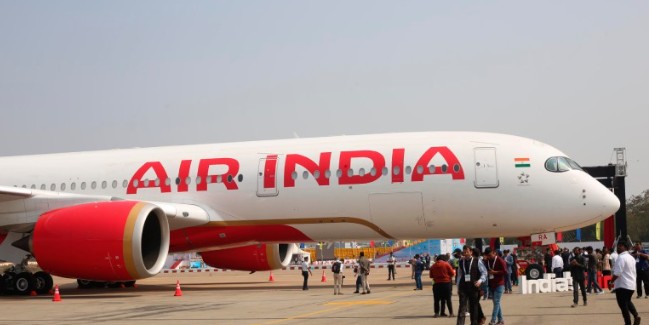From Catastrophe to Scare: Air India Faces Bomb Threat in Thailand, Heightening Aviation Jitters
Phuket, Thailand / New Delhi, India – June 13, 2025 – Just hours after a devastating plane crash in Ahmedabad claimed over 200 lives, Air India found itself embroiled in another major aviation scare today. Flight AI379, an Airbus A320 carrying 156 passengers from Phuket International Airport (HKT) to New Delhi (DEL), was forced to make an emergency landing back in Phuket after a bomb threat was discovered onboard.

The incident unfolded shortly after the aircraft’s 9:30 AM local time departure. Midway through the flight, as the plane was over the Andaman Sea, a chilling bomb threat note was found scrawled on a lavatory wall. The crew immediately initiated emergency protocols, and the aircraft made a wide loop before safely returning to Phuket.
Upon landing, all 156 passengers were swiftly and safely evacuated from the aircraft, in line with established emergency plans. Thai authorities, including Airports of Thailand (AOT) officials, immediately launched a full inspection of the aircraft. Preliminary searches, however, found no explosives or suspicious items, and Thai airport officials later confirmed the absence of any bomb onboard.
A Troubling Coincidence: The Ahmedabad Crash Shadow
The bomb threat comes at an incredibly sensitive time for Air India and the Indian aviation sector. The incident occurred less than 24 hours after Air India Flight AI171, a Boeing 787 Dreamliner with 242 people on board, crashed near Ahmedabad airport, en route to London Gatwick. That catastrophic event has claimed over 200 lives, including former Gujarat Chief Minister Vijay Rupani, and has sent shockwaves globally. The timing of the Phuket incident, while seemingly unrelated in its nature, inevitably amplifies public anxiety and scrutiny over aviation safety.
A Rising Trend of Hoax Threats
While the current bomb threat on AI379 appears to be a hoax, it highlights a concerning trend of increasing false bomb threats in India’s aviation landscape. Official data from the Bureau of Civil Aviation Security (BCAS) reveals a dramatic surge in such incidents. In the first ten months of 2024 alone, Indian airlines and airports received nearly 1,000 hoax bomb threats – a staggering tenfold increase compared to the numbers recorded in 2023. This surge has led to significant disruptions, delays, and considerable financial losses for airlines.
Aviation experts note that every bomb threat, regardless of its credibility, must be treated with the utmost seriousness. Airlines and airport authorities are mandated to activate comprehensive Bomb Threat Contingency Plans (BTCPs), involving immediate communication with air traffic control, diversion or emergency landing, passenger evacuation, and thorough searches by bomb disposal squads and sniffer dogs. These protocols are designed to ensure the safety of passengers and crew, but they come at a considerable operational cost.
The Search for Motives and Perpetrators
As Thai authorities continue their investigation into the source of the bomb threat note, the motive behind such a disruptive act remains unclear. Hoax threats can stem from a variety of reasons, ranging from disgruntled individuals seeking to cause chaos, to attempts at disrupting travel plans, or even more malicious intentions. The Indian Embassy in Bangkok is in touch with Thai authorities, and a thorough probe will likely be conducted to identify and prosecute the individual responsible.
For Air India, already reeling from the Ahmedabad tragedy, this bomb threat serves as another stern test of its resilience and security protocols. While the immediate danger was averted, the incident underscores the persistent challenges faced by airlines in maintaining vigilance against both genuine and fabricated threats, especially in a climate of heightened public concern. The back-to-back incidents will undoubtedly put pressure on regulatory bodies to review and strengthen aviation security measures even further.

